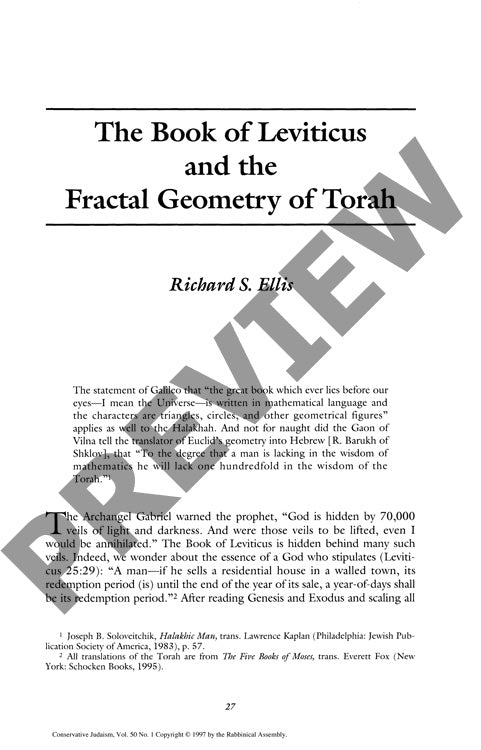The Book of Leviticus and the Fractal Ge
Couldn't load pickup availability
The seemingly rigid legal codes of Leviticus reveal an unexpected mathematical elegance when viewed through the lens of fractal geometry - they function as precise, reduced-scale replicas of the Torah's broader themes. Close reading of Hebrew texts, particularly within parashah Be-har (Leviticus 25:1-26:2), uncovers how individual commandments mirror the structural patterns of Genesis and Exodus, much like Mandelbrot's self-similar geometric forms. Through comparative analysis across biblical books, recurring motifs of Sabbath observance, sibling relationships, and divine imperatives create intricate connections from Creation to Sinai. Leviticus' abstract pronouncements gain narrative depth when understood as echoes of earlier biblical conflicts - from Cain and Abel to Joseph and his brothers. Double-arched thematic bridges link sabbatical year laws to both the Fourth Commandment and Creation's seventh day, while brotherly conduct regulations resonate with Genesis' familial narratives. This analysis reveals the Torah's fractal nature, where each portion reflects the whole's essential structure and themes, with individual verses serving as "reduced scale replicas" of its comprehensive vision for ethical living, divine relationship, and communal responsibility. Such fractal patterns provide a mathematical framework for understanding the sophisticated integration of narrative and law throughout biblical literature.

More Information
-
Physical Description
-
Publication Information
Published 1997
ISBN
-
Publication Credits
Richard Ellis

